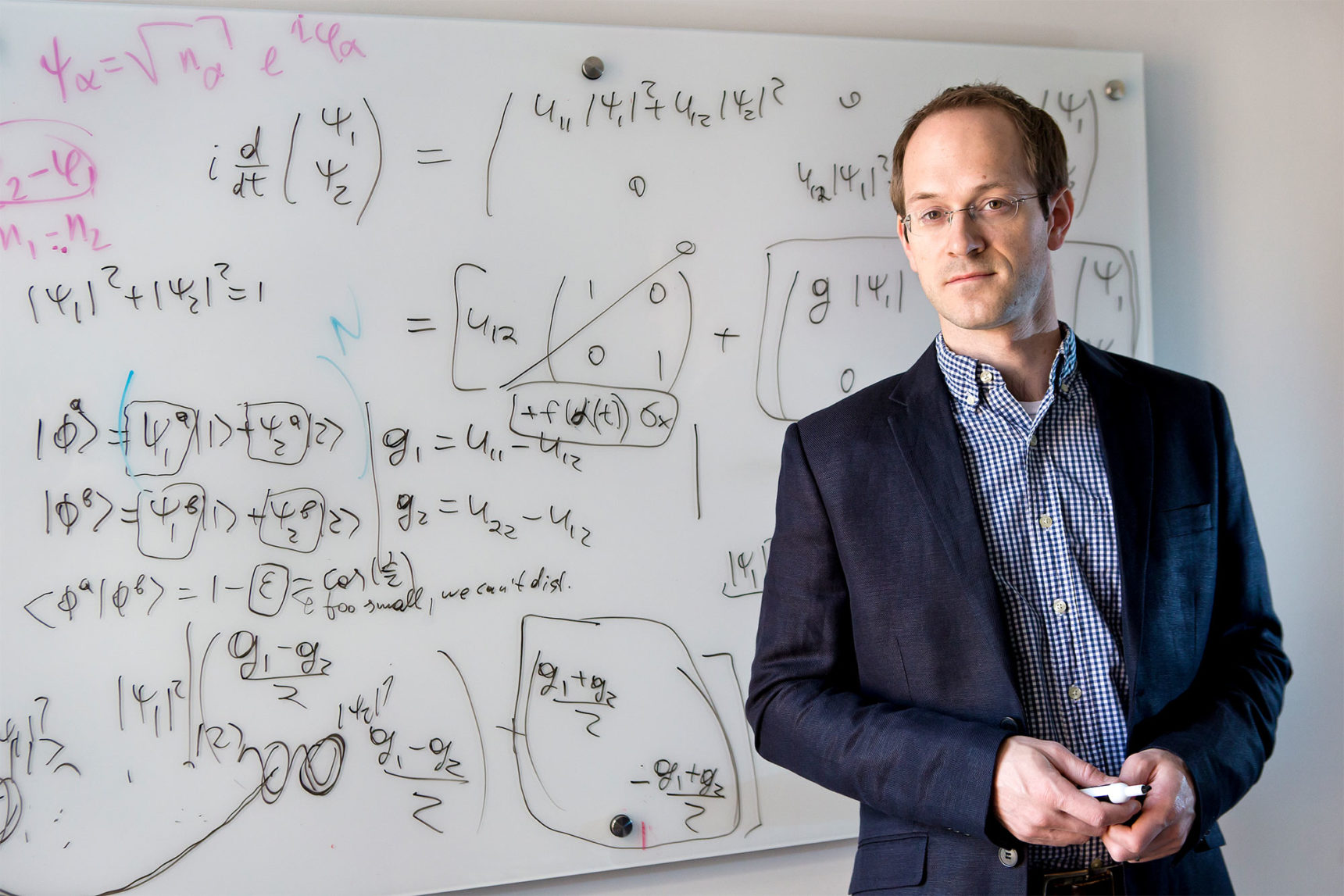
“These are some of the reasons why it is difficult to predict the weather or deal with complex fluid flow,” says Andrew Childs , a quantum information researcher at the University of Maryland. “There are difficult computational problems that you could solve if you could understand these nonlinear dynamics. ".
Perhaps scientists will soon resolve this issue. In separate studies published in November 2020, two teams ( one led by Childs and the other based at MIT) have described powerful tools that will enable quantum computers to more accurately model nonlinear dynamics.
To perform computations more efficiently than their classical counterparts, quantum computers take advantage of quantum phenomena. They already solve complex linear differential equations exponentially faster than classical machines. Researchers have long hoped that smart quantum algorithms could tame nonlinear problems as well.
New approaches disguise nonlinearity as a more digestible set of linear approximations, although the methods themselves differ significantly. Researchers now have two separate approaches to nonlinear problems using quantum computers.
“What is interesting about these two works is that they found such a regime in which, taking into account some assumptions, there is an effective algorithm,” she shared Maria Kiferova , a quantum computing researcher at the University of Technology of Sydney who is not involved with this research, is really exciting, [both studies] use very good methods. "
The cost of chaos
For more than a decade, quantum information researchers have tried to apply linear equations as the key to solving nonlinear differential equations. One breakthrough came in 2010, when Dominic Berry, currently at Macquarie University in Sydney, built the first algorithm for solving linear differential equations exponentially faster on quantum computers, not classical computers. Berry soon turned his attention to nonlinear differential equations.
"We've done some work on this before," Berry says, "but it was very, very ineffective."

Andrew Childs of the University of Maryland has spearheaded a work in which scientists are trying to allow quantum computers to more accurately model nonlinear dynamics. His team's algorithm turned chaotic systems into an array of easier-to-understand linear equations using the Carleman linearization method. John T. Console / University of Maryland
The problem is that the physics behind quantum computers is fundamentally linear in itself. “It's like teaching a car to fly,” said Bobak Kiani, co-author of the MIT study.
So the trick is to find a way to mathematically convert a nonlinear system to a linear one. “We want to have some kind of linear system, because we have the toolbox for a linear system,” Childs said, and the teams did it in two different ways.
Childs' team applied Carleman linearization, an out-of-date 1930s method, to transform nonlinear problems into an array of linear equations.
Unfortunately, the list of these equations is endless. Researchers need to figure out where they can cut it to get a good approximation. “Should I stop at equation number 10? Number 20? " Asks Nuno Lureiro , who works in plasma physics at the Massachusetts Institute of Technology (MIT) and is a co-author of the Maryland study. The team proved that within a certain range of nonlinearity, their method can constrain an infinite list and solve equations.
The work, which was led by the Massachusetts Institute of Technology, took a different approach. Any nonlinear problem was modeled as a Bose-Einstein condensate. This is a state of matter, when interactions within an ultracold group of particles cause each individual particle to behave in the same way with others. All particles are interconnected, so the behavior of each particle affects the others, returning to this particle in a loop, which is characterized by nonlinearity.
The MIT algorithm simulates this nonlinear phenomenon on a quantum computer, using Bose-Einstein math to combine nonlinearity and linearity. Thus, by representing the Bose-Einstein pseudocondensate created for each nonlinear problem, this algorithm derives a useful linear approximation. “Give me your favorite nonlinear differential equation, then I’ll build you a Bose-Einstein condensate that will simulate it,” says Tobias Osborne , a quantum information scientist at Leibniz University in Hannover who didn’t do either research. an idea that I really love. "

The MIT-led algorithm models any nonlinear problem as a Bose-Einstein condensate, an exotic state of matter where all interconnected particles behave the same. NIST
Berry believes that both works are important in their own way (he also did not participate in them). “But ultimately, their importance shows that you can use [these techniques] to get non-linear behavior,” he said.
About restrictions
Despite their importance, these steps are among the first in the field of resolving nonlinear systems. Other researchers are likely to analyze and refine each method - even before the hardware required to implement them becomes a reality. “With these algorithms we are really looking into the future,” says Kiferova. To minimize errors, noise, and apply them to solving practical nonlinear problems, quantum computers with thousands of qubits are required, much more than is possible today.
And both algorithms handle nonlinear problems realistically. The Maryland study quantifies how accurately the approach can deal with nonlinearity with a new parameter, R, that is, the ratio of the problem's nonlinearity to its linearity - its tendency to chaos versus the order that holds the system.
“Childs' research is mathematically rigorous. He gives very clear indications of when the approach will work and when it won't, ”Osborne said. - I think it's very, very interesting. This is the main contribution of work to science. "
According to Kiani, the MIT-led study does not prove there are any theorems that limit the algorithm. But the team plans to learn more about the limitations of the algorithm by running small tests on a quantum computer before moving on to more complex problems.
The most significant caveat for both techniques is that quantum solutions are fundamentally different.from the classic ones. Quantum states correspond to probabilities, not absolute values, so instead of visualizing the flow of air around each segment of the fuselage of a jet plane, for example, you extract average speeds or find pockets of stagnant air. "The fact that the result is quantum mechanical means that there is still a lot to be done afterwards to analyze the state," Kiani says.
It's vital not to overdo what quantum computers can do, Osborne said. But in the next five to ten years, researchers are bound to test many successful quantum algorithms like these on practical problems. “We’ll try anything,” he says. "And if we think about limitations, it can limit our creativity."
